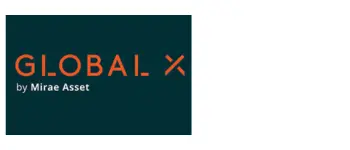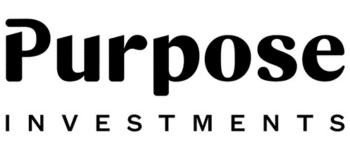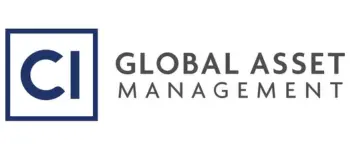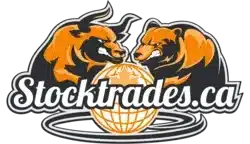No Need to Shop Around for Interest Rates. Meet Canada’s HISA ETFs
Key takeaways
Different Fee Structures & Strategies – Some ETFs reinvest income for tax efficiency, while others distribute monthly interest.
Low-Risk, High Liquidity – HISA ETFs provide a secure way to earn interest on cash holdings while maintaining daily liquidity.
Better Yields Than Bank Accounts – These ETFs typically offer higher yields than traditional savings accounts, making them attractive for short-term investors.
One ETF I like way better than the ones on this list.Record-low interest rates kept high-interest savings accounts and high-interest savings ETFs on the Toronto Stock Exchange almost useless for the longest time.
Nobody wanted to park their hard-earned cash into a high interest savings account or a Canadian ETF yielding 0.5%, especially when the stock market was soaring.
However, the tables have indeed turned. Yes, rates are coming down, but investors still have a place to park their hard-earned deposits other than the stock market.
In this article, I will go over some of the best high-interest savings ETFs you can buy today and earn monthly distributions or capital gains on your cash with relatively little risk.
However, I first what to go over the intricacies of these funds, as there are a few caveats you definitely need to know.
The risks of these high-interest savings ETFs
High-interest savings ETFs here in Canada have virtually zero risk. However, they do have some, and I must highlight them.
Here in Canada, your deposits are typically protected by the Canada Deposit Insurance Corporation. I won’t go too in-depth on the CDIC in this article. But to sum it up quickly, any deposits under $100,000 at a CDIC-covered institution will be guaranteed if something happens to the bank.
An example would be if you took $90,000 and bought a cashable GIC at Toronto Dominion Bank. If TD Bank were to go insolvent, your $90,000 would be safe.
This is not the case with these HISA ETFs. I believe the chance of insolvency at the institutions holding these HISA ETF deposits is next to zero. But it’s not impossible.
Any investor needs to consider this before investing in these ETFs. These are relatively secure but not as safe as Canadian Government bonds, treasury bills, GICs, or other high-quality forms of fixed income.
How do these HISA ETFs provide such high yields?
Fund managers like Horizons, Purpose, CI Financial, and Evolve generally have access to institutional bank savings accounts. This means that typically, because of their extensive deposits, banks can give them higher rates than retail investors.
These fund managers have then turned around and distributed those higher interest rates back to investors in their savings ETFs.
Are high-interest savings ETFs worth the fees?
In short, they are. Fees on these ETFs range from 0.1% to 0.20%. However, this is a small price to access exceptionally high interest rates, virtually 100% liquidity, and little to no risk.
What is the difference between a HISA ETF and a GIC?
There will be two key differences between a HISA ETF and a GIC. For one, liquidity. Most GICs are not liquid at all. Typically, your money is locked in for a set amount of time. HISA ETFs can be bought and sold anytime the markets are open.
Because the underlying asset of the ETF is cash, they are also entirely liquid. And secondly, the CDIC insurance.
You are not insured via the CDIC if you buy a HISA ETF, whereas, with a GIC purchased from an institution that CDIC covers, it is insured up to $100,000.
With all that said, lets dive into the best HISA ETFs in Canada.
What are the best high-interest savings account ETFs in Canada?
Tax-efficient high-yield cash alternative
Global X Cash Maximizer ETF (TSE:HSAV)

HSAV is designed for investors seeking a high-interest cash alternative with a unique tax-efficient structure. Unlike other HISA ETFs, HSAV does not distribute monthly interest; instead, it reinvests all income, allowing for compound growth. This structure can be advantageous for tax-conscious investors who prefer capital gains over interest income.
Monthly interest distributions with strong liquidity
Global X High-Interest Savings ETF (TSE:CASH)

CASH provides exposure to high-interest savings accounts at major Canadian banks. Unlike HSAV, it distributes interest monthly, making it suitable for investors seeking regular income.
One of the largest HISA ETFs with strong returns
Purpose High-Interest Savings ETF (TSE:PSA)

PSA is one of the largest HISA ETFs in Canada, offering exposure to high-yield savings accounts. It distributes interest monthly, making it a solid option for investors needing cash flow.
Low-cost, high-yield HISA ETF
CI High-Interest Savings ETF (TSE:CSAV)

CSAV offers exposure to high-interest savings accounts with a focus on competitive rates and cost efficiency. It is another strong contender among HISA ETFs.
U.S. dollar cash alternative for Canadian investors
Global X USD Cash Maximizer ETF (TSE:HSUV.U)

HSUV.U provides exposure to high-interest U.S. dollar savings accounts, making it an ideal option for Canadians holding USD cash.
Overall, Horizons has cornered the high-interest savings account fund market
Horizons ETF management has the widest variety and the lowest fees out of any fund manager in Canada regarding HISA ETFs.
There are others that did not make this list, such as the Ninepoint High-Interest Savings Fund and the Evolve High-Interest Savings Account ETF. I don’t see any added benefit to including them on this list, as they bring nothing to the table that those here do.
These funds are a great way to take advantage of higher rates and finally start to earn interest on your cash positions in volatile market conditions. Alternatively, I used these high-interest savings ETFs to make over $300 a month on my down payment while getting a house built in 2022.
There is risk here, however. But the chance of insolvency when it comes to Canadian banks, especially the major ones, is, in my opinion, next to none.
Those with different investment objectives must decide whether they like the monthly distributions of something like PSA or CASH or would rather accumulate capital gains with funds like HSAV or HSUV.U.
Brokerage commissions are another thing you’ll have to consider. Although brokerage firms such as Wealthsimple Trade have free trades, buying in and out of these funds with your cash positions, if you’re paying commission, can quickly eat away at interest earned if you don’t have a lot of money in them.
Make sure to figure out your rate of return after all fees are paid and determine if these funds are worth your time.
